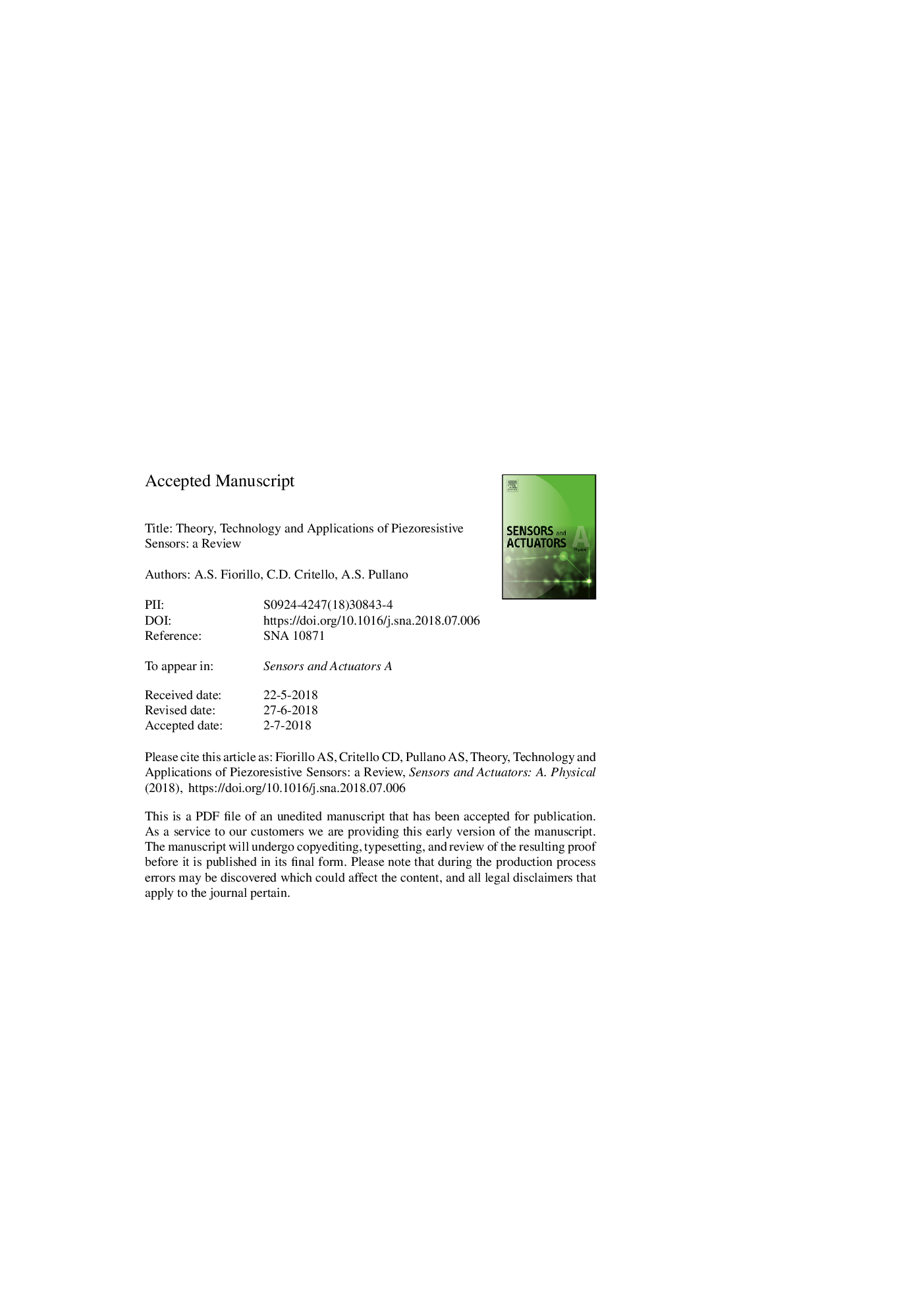| Article ID | Journal | Published Year | Pages | File Type |
|---|---|---|---|---|
| 10133565 | Sensors and Actuators A: Physical | 2018 | 76 Pages |
Abstract
Sensors based on the detection of small resistance variations are universally recognized as piezoresistive. Being one of the simplest, most common and most investigated classes of sensors, continuous efforts are focused on creating improved devices with higher performance that can be used in many commercial and non-commercial applications (e.g. evaluation of strain, pressure, acceleration, force etc.). Consequently, despite the fact that more than 150 years have passed since the discovery of the piezoresistive effect in some classes of metals and semiconductors, the development of such sensors remains interesting and topical. Moreover, with the advent of second-generation robotics, research on piezoresistive sensors has undergone a massive increase. This paper aims to be a short, self-consistent vademecum which would be useful to researchers and engineers, since it focuses on the fundamentals of theory, materials, and readout-circuit design pertinent to the most recent developments in the field of piezoresistive sensors.
Keywords
Differential gainCommon Mode Rejection RatioCMRRWavenumberResistance variationmicromachiningACMStressEnergyPotential energyInertiaPolymerswave functioncharge mobilityDisplacementMassEffective massElectric currentVolumeThin film sensorsareaTemperatureForceVelocityAngular velocitySensorsTactile sensorsThick film sensorsTemperature coefficientLengthWidthGauge factorMetalsElasticityElectronic circuitsLattice constantResistivityElectric resistanceElectric fieldPoisson’s ratioStrainSemiconductorsConductivityPiezoresistanceVolume fractionTorque
Related Topics
Physical Sciences and Engineering
Chemistry
Electrochemistry
Authors
A.S. Fiorillo, C.D. Critello, A.S. Pullano,
